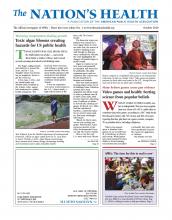The U.S. dental workforce is welcoming more women into its ranks, which could have implications for access to oral health care.
In July, the University of Albany’s Oral Health Workforce Research Center released a new study on the demographics of women in dentistry and the related potential impacts for underserved communities.
According to the study, in 2016, nearly 30% of all U.S. dentists were women, compared to 24% in 2010. Overall, women dentists were also younger and more diverse than men in the field, with higher proportions of black, Hispanic and foreign-trained dentists. Women dentists were also more likely to serve young patients, practice in urban areas and care for patients with public insurance coverage, such as Medicaid.
In fact, the likelihood of women dentists caring for patients with public insurance coverage was 30% to 80% higher when compared to their male counterparts.
The study, based on an extensive literature review and data from the American Dental Association, also found that while the majority of both men and women dentists owned their own practices, more women dentists were considered employees or worked part-time. Women were also more likely to complete their training in general or pediatric dentistry.
“The findings from this study suggest that trends in the diversification of the dental workforce should be monitored over time so that pipeline programs, policy advocates and professional stakeholders can be proactive in responding to changes in practice preferences, especially those related to the geography of dental practices,” the study stated.
APHA member Margaret Langelier, MSHSA, co-deputy director of the Oral Health Workforce Research Center, said findings related to publicly insured patients could have implications for widening access to oral health care and closing disparities in care and outcomes. Greater diversity among women dentists might also have benefits for advancing culturally competent dental care as well, she noted.
“Overall, we found women were more likely to serve a higher proportion of underserved populations,” said APHA member and study co-author Simona Surdu, MD, PhD, co-deputy director of the Oral Health Workforce Research Center. “This was true regardless of other characteristics.”
Langelier said the new study can also help dispel myths, flesh out anecdotes about women in the workforce, and help stakeholders plan for potential changes in workforce capacity. For example, the study found that in 2016, women dentists spent fewer hours each week at the dental office treating patients than male dentists. But at the same time, women dentists reported more patients per week, and still more reported being too busy to treat all the people requesting their care.
“If we are in fact generating more women dentists who also tend to work less, that could affect supply and demand,” Langelier told The Nation’s Health. “But there’s also some indication that women are seeing more patients even if they’re working a little less — those are the kinds of differences worth investigating more.”
Next up, Langelier said researchers hope to dig deeper to discover how a range of additional factors — such as having children, spousal employment and commuting time — impact male and female dentists.
“We hope the data will be used by policymakers and dentists trying to develop an approach to closing potential gaps in oral health care services,” Surdu told The Nation’s Health.
For more information on the dental workforce study, visit www.oralhealthworkforce.org.
- Copyright The Nation’s Health, American Public Health Association












